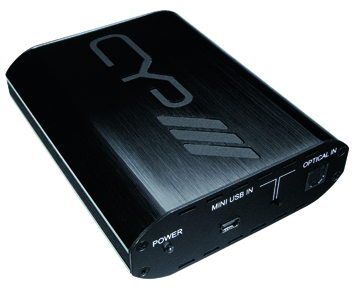What Hi-Fi? Verdict
This tempting CYP DAC packs much to like in a functional box
Pros
- +
Optical ins and outs
- +
impressive punch and attack
- +
cohesion
Cons
- -
Slight lack of solidity
Why you can trust What Hi-Fi?
Looking through CYP’s catalogue, it’s easy to think that the company builds products primarily designed to serve a technical purpose, rather than sound great.
However, this is the second CYP DAC we’ve had in for review, and the second with serious sonic credentials.
The AU-D150 has an optical input that can handle music files up to 24-bit and 192kHz and a USB that’s limited to 16-bit 44.1/48kHz, while on the output side you’ve got the expected RCAs and unexpected optical.
So yes, it will convert USB to optical (useful if you’re putting PC audio into a home cinema amp).
If you’re playing CD quality files there’s no huge difference between the optical and USB inputs.
Both have impressive punch and attack married to pleasant fluidity and a cohesive soundstage, and that makes for an interesting, exciting delivery with just about any music.
It’s not the most detailed DAC around, and there’s a slight lack of solidity behind the initial punch of each note, but it’s still tempting.
What Hi-Fi?, founded in 1976, is the world's leading independent guide to buying and owning hi-fi and home entertainment products. Our comprehensive tests help you buy the very best for your money, with our advice sections giving you step-by-step information on how to get even more from your music and movies. Everything is tested by our dedicated team of in-house reviewers in our custom-built test rooms in London, Reading and Bath. Our coveted five-star rating and Awards are recognised all over the world as the ultimate seal of approval, so you can buy with absolute confidence.

